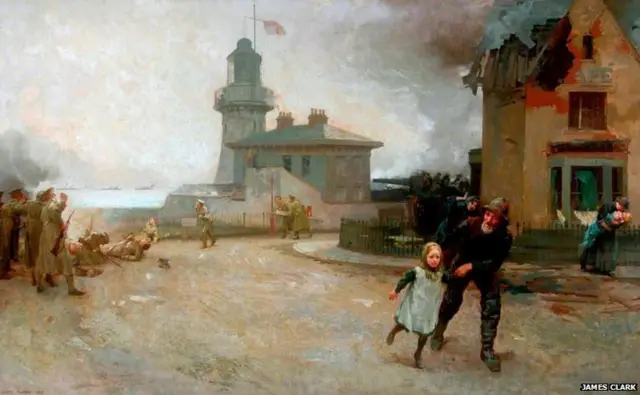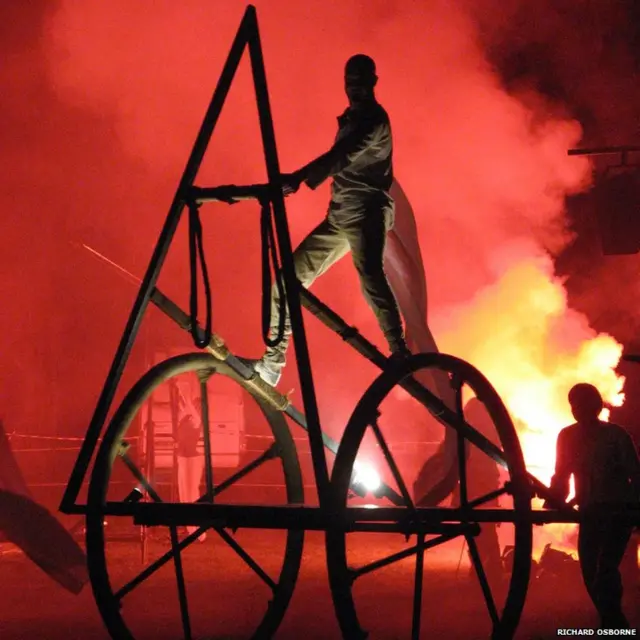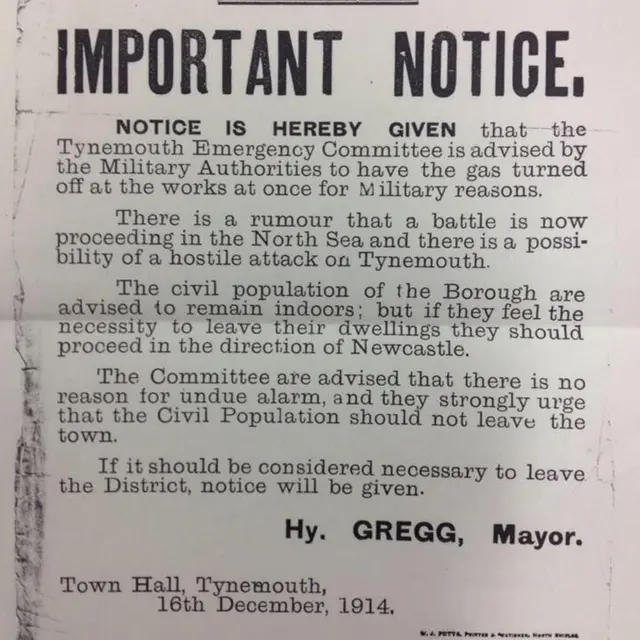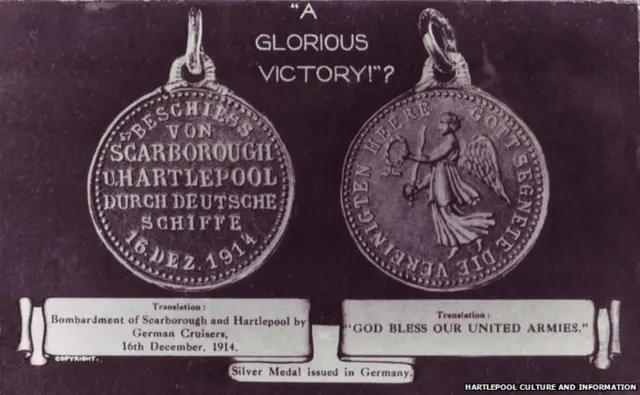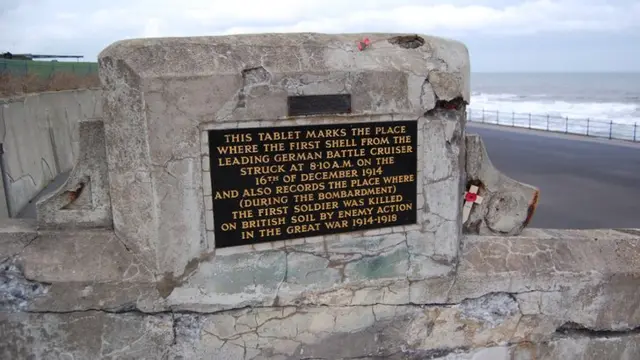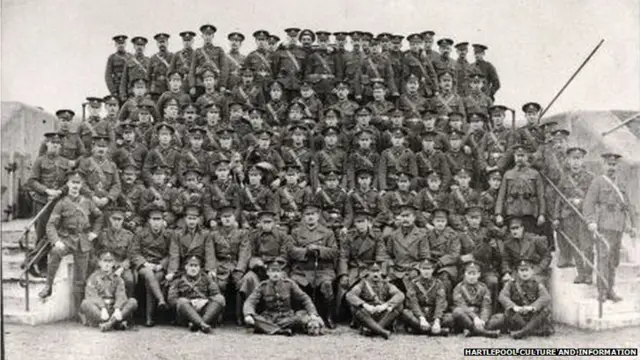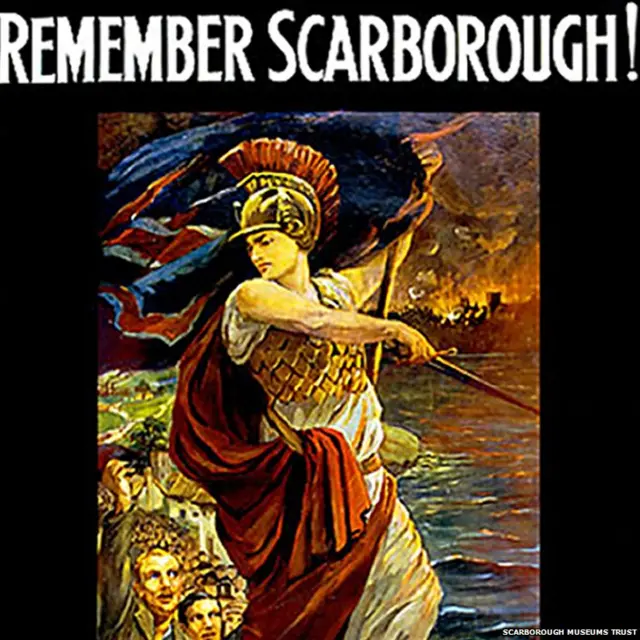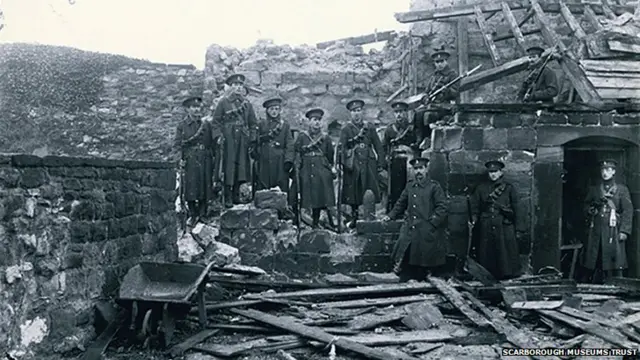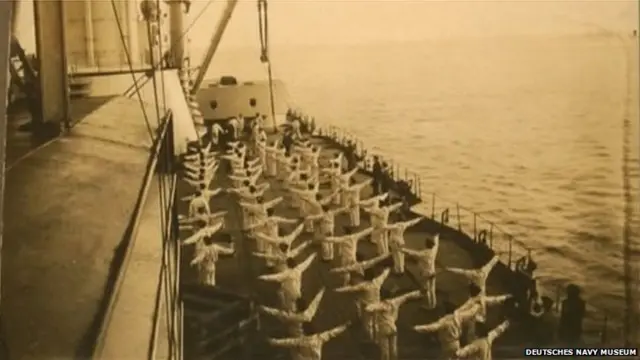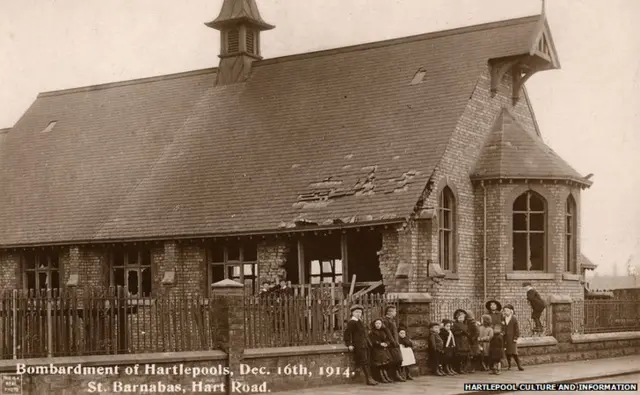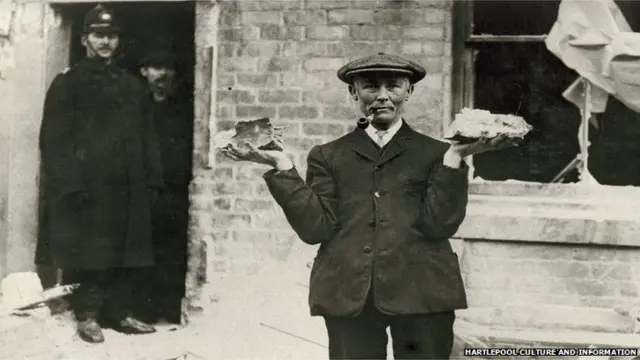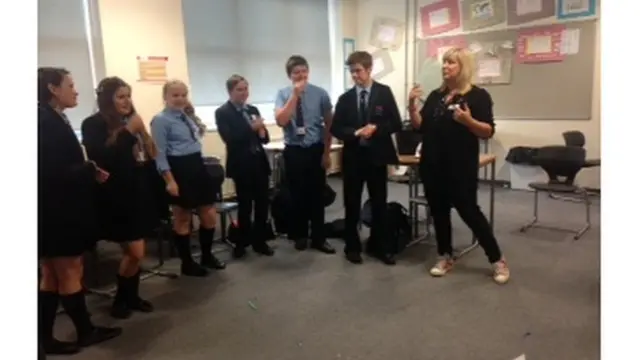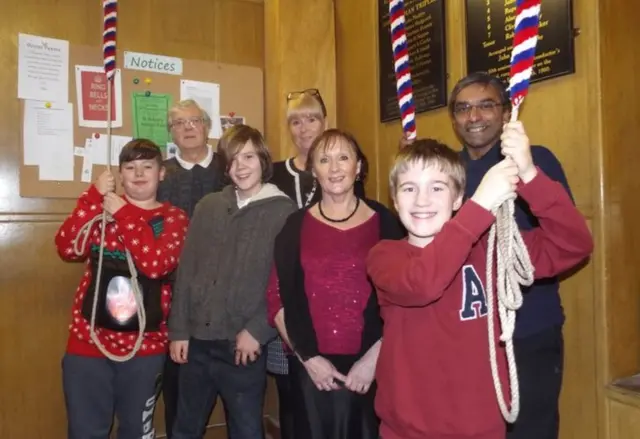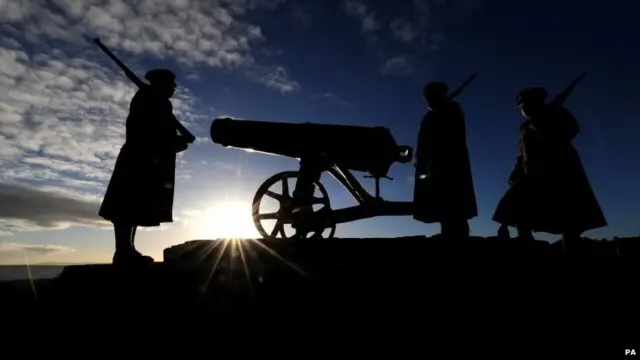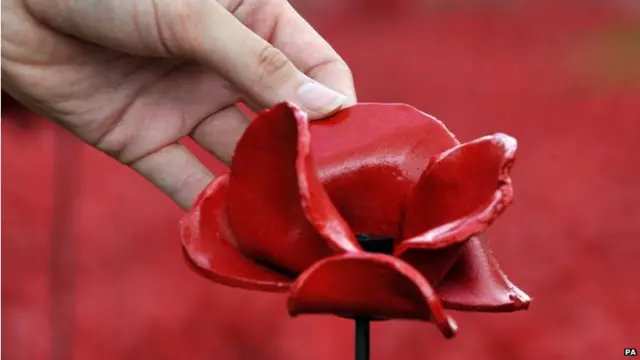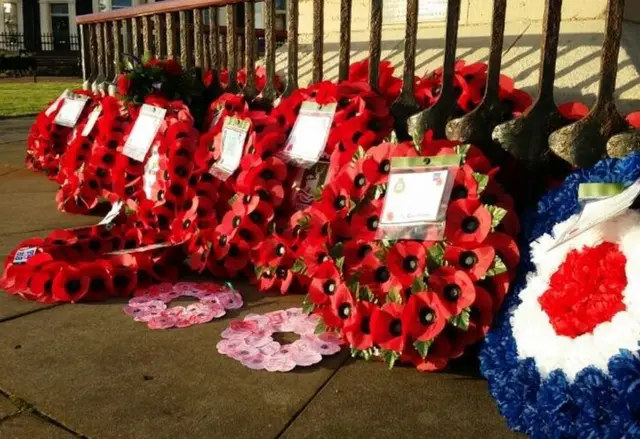Goodbyepublished at 14:30 GMT 16 December 2014
 Kristie Kinghorn
Kristie Kinghorn
BBC News Online
That brings us to the end of our dedicated coverage of the centenary of the Hartlepool Bombardment.
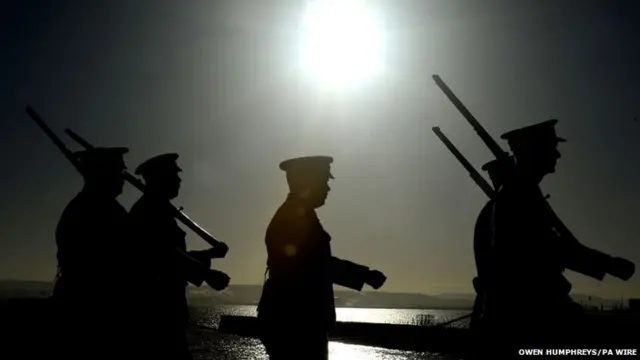 Image source, Owen Humphreys/PA Wire
Image source, Owen Humphreys/PA WireThere will be further updates on the BBC North East Local Live page. And here are links to our other coverage of the bombardment - an audio slideshow with archive pictures and first-hand accounts, a feature looking at Hartlepool then and now and the German perspective on the bombardment.
